Features
The Aftermath of Empire – Reappraisal and Reconciliation – (Part 2)
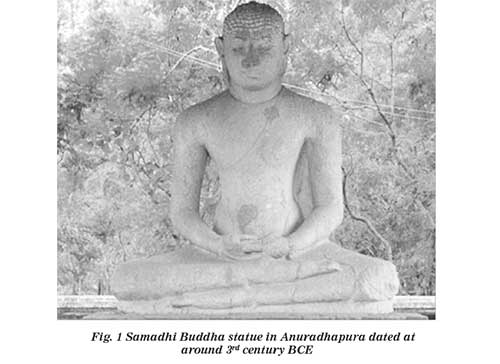
by Professor Chandra Wickramasinghe*
Continued from last week
The author is an Honorary Professor at the University of Buckingham, UK, at the University of Ruhuna, Sri Lanka, and also at the National Institute of Fundamental Studies in Sri Lanka.
He was a former Fellow of Jesus College, Cambridge, Staff Member of the Institute of Astronomy, Cambridge, and former Professor at Cardiff University. He is a pioneer of the discipline of Astrobiology and the author of over 450 scientific papers and some 35 books.
Several generations of British historians, archaeologists and naturalists devoted their entire lives to tirelessly exploring the multiplicity of wonders of India. Studies of the subcontinent’s natural history, archaeology and anthropology are just a few scientific disciplines that enormously benefited from the imperial encounter. The introduction of greenhouses, zoological and botanic gardens to the Western world and much else came directly as a result of the colonial venture.
One discovery of great importance is worthy of mention. A large number of stone pillars and columns bearing mysterious inscriptions in a hitherto undeciphered Brahmi script had been scattered across the length and breadth of India and, rather strangely, gone unnoticed for centuries. In the 1830’s it was an English Philologist and scholar James Prinsep (1799-1840) who successfully deciphered these inscriptions. The edicts written in the Bhrami language mentioned a King Devanampriya Piyadasi which Prinsep had initially assumed was a Sri Lankan king. He was later to discover a Pali text from Sri Lanka from which he was able to connect the title Piyadasi with Ashoka, and thus was revealed for a first time a long-hidden secret of Indian history – the life and times of Emperor Ashoka who had reigned between 268 and 232 BCE. Ashoka is famous as the Indian monarch who became a Buddhist and unified a vast part of the Indian subcontinent into a single empire ruling it according to Buddhist principles. H.G. Wells in his “Outline of World History” said of Ashoka that amid tens of thousands of names of monarchs, “Ashoka shines, shines almost alone, a star”.
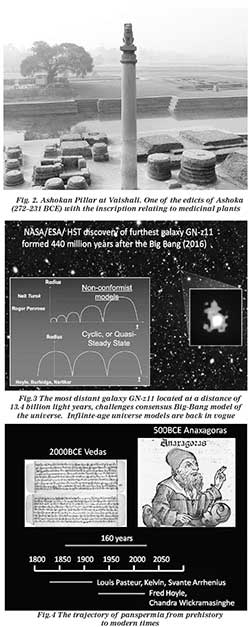 In the 1920’s it was again thanks to British archaeologists that we owe the next major discovery – the unravelling of the great Indus valley civilizations of Harappa and Mohenjo-Daro which represents another long-hidden chapter in the prehistory of the Indian subcontinent stretching back to the third millennium BCE. We already had knowledge from Mesopotamian records of a vigorous trade in lapis lazuli that existed between empires in the Mesopotamia and India, but now we could link this precisely with the Indus valley civilizations.
In the 1920’s it was again thanks to British archaeologists that we owe the next major discovery – the unravelling of the great Indus valley civilizations of Harappa and Mohenjo-Daro which represents another long-hidden chapter in the prehistory of the Indian subcontinent stretching back to the third millennium BCE. We already had knowledge from Mesopotamian records of a vigorous trade in lapis lazuli that existed between empires in the Mesopotamia and India, but now we could link this precisely with the Indus valley civilizations.
Unravelling a Buddhist heritage
A few British Civil Servants who were posted in Ceylon in the 19th century became assiduous students of Buddhist texts and wrote extensively and enthusiastically about Buddhism. Thomas William Rhys David (1843-1922) was one such scholar who found himself posted as Government Agent near the historic ancient city of Anuradhapura. There he became actively involved in archaeological excavations that led to the discovery of a vast number of inscriptions and manuscripts relating to Buddhism and this triggered his interest. He soon became a formidable Pali scholar, translated many Buddhist Pali texts into English and also wrote extensive commentaries on Buddhism that are still being read today.
The colonial response to Buddhism on the whole had been positive throughout the time of the Empire. H.G. Wells (1866-1946) in his “Outline of World History” writes of Buddhism thus:
“Many of our best modern ideas are in closest harmony with it. All the miseries and discontents of life are due, he (the Buddha) taught, to selfishness. Selfishness takes three forms – one, the desire to satisfy the senses; second, the craving for immortality; and the third the desire for prosperity and worldliness. Before a man can become serene he must cease to live for his senses or himself. Then he merges into a great being. Buddha in a different language called men to self-forgetfulness five hundred years before Christ. In some ways he was nearer to us and our needs. Buddha was more lucid on our individual importance in service than Christ, and less ambiguous upon the question of personal immortality.”
The amazing degree of concordance between Buddha’s view of consciousness and modern post-Jungian ideas in psychology were discussed by me and Daisaku Ikeda in our dialogue many years ago. The practice of Buddhist meditation is becoming increasingly popular in the West today because of its potential to yield mental and physical health benefits. Such practices, however, are looked upon with suspicion by many – now and in the past – as heathen primitive rituals that challenge the cannon of Christian faith. Such a narrow view cannot be interpreted as being any other than a component of racial thinking that prevailed throughout the period of British imperialism and filters down even into our post-colonial modern era.
Buddhist cosmology
In matters relating to cosmology and life in the Universe ideas from Buddhist as well as earlier Vedic traditions have run contrary to the canonical Western world-view. For instance, in the cosmology described in the Anguttara Nikaya (a Buddhist text dated at around the 1st century BCE) it is stated thus:
“As far as these suns and moons revolve, shedding their light in space, so far extends the thousand-fold world system. In it there are a thousand suns, a thousand moons, a thousand inhabited Earths and a thousand heavenly bodies. This is called the thousand-fold minor world system….”
It then goes on to define a hierarchy of world systems, referring to the entire universe as “this sphere of million, million world systems”. Similar views do not dominate scientific thinking in Europe until after the Copernican revolution in the 17th century of the common era. Today, with the recent discoveries of exoplanets in the past decade, the total number of exoplanetary systems in our Milky Way galaxy alone is estimated to exceed 100 billion.
As far back as the first millennium BCE a school of atomism similar to that of Democritus was founded in India, the most important proponent of this school being a philosopher named Kanada (600 BCE). The idea was that atoms are point-sized, indivisible and eternal, each possessing a distinct property and individuality. These concepts were developed further by a burgeoning Buddhist school of atomism that flourished in the 7th century CE.
Aryabhata (476-550CE) was perhaps the first Indian astronomer in the modern mould who discovered an approximation of pi to six significant figures and also correctly maintained that the planets and the Moon shine by reflected sunlight. He also correctly inferred from observations that the daily motion of the stars in the celestial sphere is due to Earth’s rotation about its axis.
From both archaeological and later historical evidence there is no doubt that high levels of advancement in science and technology had been achieved in India long before Aryabhata going back to at least the second millennium before the common era. Vedic Sanskrit texts dated at the 8th century BCE refer to Pythagorean triples (eg. (3,4,5 (5,12,13), (8,15,17)) and display a knowledge of Pythagoras theorem. One of the earliest Indian astronomical texts (Vedānga Jyotiṣa) dates from 1400–1200 BCE, with the currently extant form dating possibly from 700–600 BCE. This latter timespan also corresponds to the dating of the most ancient known “university” in the world, Takshashila in India, which was a centre first of Hindu and later Buddhist scholarship.
Ayurveda and plant-based pharmaceuticals
Developments in the field of ayurvedic plant-based medicine, and including reports of surgical interventions, have been recorded in a variety of sources from the earliest times. In one of the Ashokan pillars (272-231BCE), to which I have already referred, an edict reads: “Everywhere King Piyadasi (Ashoka) erected two kinds of hospitals, hospitals for people and hospitals for animals. Where there were no healing herbs for people and animals, he ordered that they be bought and planted.” There also exist many thousands of ayurvedic texts both in India and Sri Lanka with extensive lists of medicinal herbs and their alleged benefits for curing various ailments. The result of four centuries of colonial rule has unfortunately been to relegate this vast legacy to the “archive of curiosity”.
The few ayurvedic physicians who now practice in India and Sri Lanka still rely on time-hallowed anecdotal accounts of the efficacy of their plant-based medicines. The correct procedure will be for western science to fully explore these claims with chemical analysis and trials, but this has not yet been done. It should be recalled in this context that many drugs currently used in western medicine are indeed derived from plants – aspirin, quinine, digitalis, morphine, codeine – are just a few. It is hard to imagine the medical legacy that would follow from a complete investigation of the thousands of claimed herbal remedies that still remain unexamined.
Transition from ancient to modern science
I have already mentioned the knowledge of land surveying technologies and irrigation schemes that was evident in the Indus valley civilizations of Mohenjo-Daro and Harappa; and these and other technological developments have also been found elsewhere in India and in neighbouring Sri Lanka throughout the period from the beginning of the common era until the time of the arrival of the British in 1600CE.
When the British arrived in India the difference in technological development between Britain and the subcontinent was arguably marginal. Handlooms and weaving technology that were developed and used in Bengal made India (run by the Moghuls) one of the richest countries of the world at this time. In a real sense it could be maintained that the technological advancement of the West took place at the cost of the continued impoverishment of India.
From the beginning of the 20th century many Indian scientists who were trained in British Universities and laboratories made highly significant contributions to the progress of science furthering the dominant scientific paradigms of Western science. A common feature of all these scientists is that their corpus of work supported and did not in any way challenge the major accepted paradigms of the day. Their achievements were thus thought to be a continuing tribute to the prevailing and predominant traditions of western science, and so were readily acknowledged and rewarded. However serious difficulties can arise whenever an ethnically non-European scientist hailing from an ex-colony dares to challenge a reigning paradigm of Western science.
Clash of Orthodoxy and Heresy
It should occasion no surprise to find that most important advances in science with regard to fundamental of issues concerning the Universe and Life have always been subject to cultural and religious constraints. Thus, in the 19th century the unfolding facts of geology that yielded an age of the Earth of some 4 billon years came into sharp conflict with Biblical chronologies of mere thousands of years, and this had initially caused great angst in some circles. Likewise, the facts of biological evolution that were unravelled after Charles Darwin’s Origin of Species was published in 1859 continued to disturb conventional beliefs for several decades.
As already mentioned Buddhist and earlier Vedic cosmologies can be interpreted as being consistent with many aspects of modern and post-modern scientific thought. There are also fundamental differences that can cause consternation in a Western scientific context. In Vedic cosmology the universe is thought to be infinite in spatial extent and cyclic in time– strikingly reminiscent of the modern versions of oscillating universe models. In this context it is worth noting that the currently favoured Big-Bang theory of the Universe with an age of 13.8 billion years is by no means absolutely proved. The very recent discovery of a galaxy designated GN-z11 located at a distance of 13.4 billion light years (implying its formation just 420 million years after the posited Big Bang origin of the Universe) poses serious problems for the current consensus view of cosmology.
Recently Nobel Laureate Roger Penrose has come in among the select band of dissenters from the standard view of a unique Big Bang origin of the Universe 13.8 billion years ago. In a theory called the “conformal cyclic cosmology” Penrose postulates that the universe undergoes an infinite number of cycles in which the Big Bang event 13.8 billion years ago is the most recent cycle of which we are a part – a result strikingly in accord with ancient Vedic and Indian cosmology.
The inescapable fact of Panspermia
Finally, I turn to the age-old problem of our own origins – how we, humans and indeed all of life, came to be. This question has been approached in a multitude of different ways, embracing superstition, religion, philosophy and eventually science. The ideas that prevailed throughout ancient India involved the concept of life being an integral part of the structure of the universe – a view closely aligned to the ideas of panspermia discussed in the West by pre-Socratic Greek philosopher Anaxoragas of Clazomenae who lived around 500BCE. Panspermia implies that “seeds of life” are eternally present in the cosmos and take root whenever and wherever the condition permit.
This concept was vigorously rejected in the Western tradition in favour of the ideas of the more influential Greek philosopher Aristotle in the 3rd century BCE. Aristotle proposed instead that life must arise from non-living inorganic matter whenever the right conditions prevailed, and he cited many instances that were incorrectly regarded as supportive evidence, the most graphic being the statement of “fireflies emerging from a mixture of warm earth and morning dew”. Over a millennium and a half later Saint Thomas Aquinas (1225-1272) essentially co-opted Aristotelian philosophy into church doctrine, so that dissent from any component of it thereafter was effectively construed as heresy. The Aristotlean doctrine of “Spontaneous Generation” was transformed into “Abiogenesis” in modern terms and continues to dominate Western science almost to the present day.
Attempts to re-examine panspermia in the West began in earnest with the French biologist Louis Pasteur in the early 1860’s. Pasteur showed in the laboratory what was already known for larger visible life forms – that life is always derived from pre-existing life of a similar kind. This casual chain of events – life-from-life – is true not only for lifeforms existing today but it is also true throughout the entire record of fossilised life on the Earth. The question that next arises is: when and where this connection cease to operate. The answer could be never – so this then naturally leads to panspermia.
Following the experiments of Pasteur, panspermia came at last to be championed by many contemporary physicists in the late 19th century.
Lord Kelvin declared: “Dead matter cannot become living without coming under the influence of matter previously alive. This seems to me to be as sure a teaching of science as the law of gravitation….”
And the German physicist Herman von Helmholtz wrote in 1874:
“It appears to me a fully correct scientific procedure, if all our attempts fail to cause the production of organisms from non-living matter, to raise the question whether life has ever arisen, whether seeds have not been carried from one planet to another…”.
A similar position was also championed a few years later by the Nobel prize-winning Chemist Svante Arrhenius in his 1908 book Worlds in the Making. But all this enthusiasm was transient. On the basis of poorly designed experiments concerning limits to the viability of microbes in space, the situation soon reverted, and spontaneous generation and abiogenesis came back into vogue.
In the past five decades abiogenesis was confronted with a formidable array of new facts from astronomy, geology, space science and molecular biology, all of which challenged its validity. On the other hand, an ever-increasing number of predictions of panspermia has come to be verified to an astounding degree of precision. Wrong theories do not perform in this way, so it soon became amply clear that panspermia’s star was on the ascendant! The sociology of science now took over: the triumphs of panspermia over rival models began to irritate an ever-increasing body of scientists. This was aggravated by the fact that all attempts to demonstrate the validity of abiogenesis in the most advanced laboratories in the world consistently led to dismal failure.
The trajectory of panspermia from its early roots in the Vedas through to Anaxoragas in the 5th century BCE and into modern times is sketched in Fig.4. The last phase following on from Pasteur led up to the work of the present writer, Fred Hoyle and many collaborators. This unfolding scientific drama is well-documented in a very large number of scientific papers and recent books.
What I would like to reiterate by way of conclusion is that the body of objective scientific evidence in favour of cometary panspermia and against abiogenesis is now compelling and overwhelming. The main reason that this new world view has yet to enter mainstream thinking, and even become more widely known, may be simply because its principal proponent (the present writer) is seen as a heathen and a former colonial subject. In what could be seen as the most egregious travesty of justice serious attempts are being made to “steal” our well-documented priority on these ideas in recent publication of similar ideas but with a deliberate omission of any reference to pioneering work over the past 40 years. In my view overt racism including antagonism for what is seen to be an alien concept is the only conceivable explanation for this conduct. This explanation also provides the only reason for why a long-overdue paradigm shift from planet-centred life to cosmic-centred life – a paradigm shift which is potentially of the most profound importance across the whole of science – is being delayed.
The long colonial encounter between “West” and “East” that began in the 15th and 16th centuries ending barely seven decades ago has in every sense shaped the modern world. Many scars have been left, however, and a priority of the ongoing decolonisation process must not only be to expand on the legacy of this long experience but also to heal its wounds.
Features
When water becomes the weapon

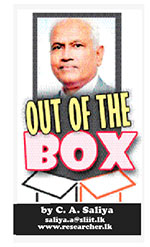 On the morning of November 28, 2025, Cyclone Ditwah made an unremarkable entrance, meteorologically speaking. With winds barely scraping 75 km/h, it was classified as merely a “Cyclonic Storm” by the India Meteorological Department. No dramatic satellite spiral. No apocalyptic wind speeds. Just a modest weather system forming unusually close to the equator, south of Sri Lanka.
On the morning of November 28, 2025, Cyclone Ditwah made an unremarkable entrance, meteorologically speaking. With winds barely scraping 75 km/h, it was classified as merely a “Cyclonic Storm” by the India Meteorological Department. No dramatic satellite spiral. No apocalyptic wind speeds. Just a modest weather system forming unusually close to the equator, south of Sri Lanka.
By December’s second week, the numbers told a story of national reckoning: over 650 lives lost, 2.3 million people affected, roughly one in ten Sri Lankans, and economic losses estimated between $6-7 billion. To put that in perspective, the damage bill equals roughly 3-5% of the country’s entire GDP, exceeding the combined annual budgets for healthcare and education. It became Sri Lanka’s deadliest natural disaster since the 2004 tsunami.
The Hydrology of Horror
The answer lies not in wind speed but in water volume. In just 24 hours on 28 November, hydrologists estimate that approximately 13 billion cubic meters of rain fell across Sri Lanka, roughly 10% of the island’s average annual rainfall compressed into a single day. Some areas recorded over 300-400mm in that period. To visualise the scale: the discharge rate approached 150,000 cubic meters per second, comparable to the Amazon River at peak flow, but concentrated on an island 100 times smaller than the Amazon basin.
The soil, already saturated from previous monsoon rains, couldn’t absorb this deluge. Nearly everything ran off. The Kelani, Mahaweli, and Deduru Oya river systems overflowed simultaneously. Reservoirs like Kala Wewa and Rajanganaya had to release massive volumes to prevent catastrophic dam failures, which only accelerated downstream flooding.
Where Development Met Disaster
The human toll concentrated in two distinct geographies, each revealing different failures.
In the Central Highlands, Kandy, Badulla, Nuwara Eliya, Matale, landslides became the primary killer. The National Building Research Organisation documented over 1,200 landslides in the first week alone, with 60% in the hill country. These weren’t random geological events; they were the culmination of decades of environmental degradation. Colonial-era tea and rubber plantations stripped highland forests, increasing soil erosion and landslide susceptibility. Today, deforestation continues alongside unregulated hillside construction that ignores slope stability.
The communities most vulnerable? The Malaiyaha Tamil plantation workers, descendants of indentured labourers brought from South India by the British. Living in cramped “line rooms” on remote estates, they faced both the highest mortality rates and the greatest difficulty accessing rescue services. Many settlements remained cut off for days.
Meanwhile, in the Western Province urban basin, Colombo, Gampaha, Kolonnawa, the Kelani River’s overflow displaced hundreds of thousands. Kolonnawa, where approximately 70% of the area sits below sea level, became an inland sea. Urban planning failures compounded the crisis: wetlands filled in for development, drainage systems inadequate for changing rainfall patterns, and encroachments on flood retention areas all transformed what should have been manageable flooding into mass displacement.
The Economic Aftershock
By 03 December, when the cyclone had degraded to a remnant low, the physical damage inventory read like a national infrastructure audit gone catastrophic:
UNDP’s geospatial analysis revealed exposure: about 720,000 buildings, 16,000 km of roads, 278 km of rail, and 480 bridges in flooded zones. This represents infrastructure that underpins the daily functioning of 82-84% of the national economy.
The agricultural sector faces multi-season impacts. The cyclone struck during the Maha season, Sri Lanka’s major cultivation period, when approximately 563,950 hectares had just been sown. Government data confirms 108,000 hectares of rice paddies destroyed, 11,000 hectares of other field crops lost, and 6,143 hectares of vegetables wiped out. The tea industry, while less damaged than food crops, projects a 35% output decline, threatening $1.29 billion in annual export revenue.
Supply chains broke. Cold storage facilities failed. Food prices spiked in urban markets, hitting hardest the rural households that produce the food, communities where poverty rates had already doubled to 25% following the recent economic crisis.
The Hidden Costs: Externalities
Yet the most consequential damage doesn’t appear in economic loss estimates. These are what economists call externalities, costs that elude conventional accounting but compound human suffering.
Environmental externalities : Over 1,900 landslides in protected landscapes like the Knuckles Range uprooted forest canopies, buried understory vegetation, and clogged streams with debris. These biodiversity losses carry long-term ecological and hydrological costs, habitat fragmentation, compromised watershed function, and increased vulnerability to future slope failures.
Social externalities: Overcrowded shelters created conditions for disease transmission that WHO warned could trigger epidemics of water-, food-, and vector-borne illnesses. The unpaid care work, predominantly shouldered by women, in these camps represents invisible labour sustaining survival. Gender-based violence risks escalate in displacement settings yet receive minimal systematic response. For informal workers and micro-enterprises, the loss of tools, inventory, and premises imposes multi-year setbacks and debt burdens that poverty measurements will capture only later, if at all.
Governance externalities: The first week exposed critical gaps. Multilingual warning systems failed, Coordination between agencies remained siloed. Data-sharing between the Disaster Management Centre, Meteorology Department, and local authorities proved inadequate for real-time decision-making. These aren’t technical failures; they’re symptoms of institutional capacity eroded by years of budget constraints, hiring freezes, and deferred maintenance.
Why This Cyclone Was Different
Climate scientists studying Ditwah’s behaviour note concerning anomalies. It formed unusually close to the equator and maintained intensity far longer than expected after landfall. While Sri Lanka has experienced at least 16 cyclones since 2000, these were typically mild. Ditwah’s behaviour suggests something shifting in regional climate patterns.
Sri Lanka ranks high on the Global Climate Risk Index, yet 81.2% of the population lacks adaptive capacity for disasters. This isn’t a knowledge gap; it’s a resource gap. The country’s Meteorology Department lacks sufficient Doppler radars for precise forecasting. Rescue helicopters are ageing and maintenance are deferred. Urban drainage hasn’t been upgraded to handle changing rainfall patterns. Reservoir management protocols were designed for historical rainfall distributions that no longer apply.
The convergence proved deadly: a climate system behaving unpredictably met infrastructure built for a different era, governed by institutions weakened by austerity, in a landscape where unregulated development had systematically eroded natural defences.

Sources: WHO, UNICEF, UNDP, Sri Lanka Disaster Management Centre, UN OCHA, The Diplomat, Al Jazeera,
The Recovery Crossroads
With foreign reserves barely matching the reconstruction bill, Sri Lanka faces constrained choices. An IMF consideration of an additional $200 million on top of a scheduled tranche offers partial relief, but the fiscal envelope, shaped by ongoing debt restructuring and austerity commitments, forces brutal prioritisation.
The temptation will be “like-for-like” rebuilds replace what washed away with similar structures in the same locations. This would be the fastest path back to normalcy and the surest route to repeat disaster. The alternative, what disaster planners call “Build Back Better”, requires different investments:
* Targeted livelihood support for the most vulnerable: Cash grants and working capital for fisherfolk, smallholders, and women-led enterprises, coupled with temporary employment in debris clearance and ecosystem restoration projects.
* Resilient infrastructure: Enforce flood-resistant building codes, elevate power substations, create backup power routes, and use satellite monitoring for landslide-prone areas.
* Rapid disaster payments: Automatically scale up cash aid through existing social registries, with mobile transfers and safeguards for women and disabled people.
* Insurance for disasters: Create a national emergency fund triggered by rainfall and wind data, plus affordable microinsurance for fishers and farmers.
* Restore natural defences: Replant mangroves and wetlands, dredge rivers, and strictly enforce coastal building restrictions, relocating communities where necessary.
The Reckoning
The answers are uncomfortable. Decades of prioritising economic corridors over drainage systems. Colonial land-use patterns perpetuated into the present. Wetlands sacrificed for development. Budget cuts to the institutions responsible for warnings and response. Building codes are unenforced. Early warning systems are under-resourced. Marginalised communities settled in the riskiest locations with the least support.
These aren’t acts of nature; they’re choices. Cyclone Ditwah made those choices visible in 13 billion cubic meters of water with nowhere safe to flow.
As floodwaters recede and reconstruction begins, Sri Lanka stands at a crossroads. One path leads back to the fragilities that made this disaster inevitable. The other, more expensive, more complex, more uncomfortable, leads to systems designed not to withstand the last disaster but to anticipate the next ones.
In an era of warming oceans and intensifying extremes, treating Ditwah as a once-in-a-generation anomaly would be the most dangerous assumption of all.
(The writer, a senior Chartered Accountant and professional banker, is Professor at SLIIT, Malabe. The views and opinions expressed in this article are personal.)
Features
Revival of Innovative systems for reservoir operation and flood forecasting

Most reservoirs in Sri Lanka are agriculture and hydropower dominated. Reservoir operators are often unwilling to acknowledge the flood detention capability of major reservoirs during the onset of monsoons. Deviating from the traditional priority for food production and hydropower development, it is time to reorient the operational approach of major reservoir operators under extreme events, where flood control becomes a vital function. While admitting that total elimination of flood impacts is not technically feasible, the impacts can be reduced by the efficient operation of reservoirs and effective early warning systems.
At the very outset, I would like to mention that the contents in this article are based on my personal experience in the Irrigation Department (ID), and there is no intention to disrespect their contributions during the most recent flood event. The objective is to improve the efficiency and the capability of the human resources available in the ID and other relevant institutions to better respond to future flood disasters.
Reservoir operation and flood forecasting
Reservoir management is an important aspect of water management, as water storage and release are crucial for managing floods and droughts. Several numerical models and guidelines have already been introduced to the ID and MASL during numerous training programs for reservoir management and forecasting of inflows.
This article highlights expectations of engineering professionals and discusses a framework for predicting reservoir inflows from its catchment by using the measured rainfall during the previous few days. Crucially, opening the reservoir gates must be timed to match the estimated inflow.
Similarly, rainfall-runoff relationships had been demonstrated and necessary training was provided to selected engineers during the past to make a quantitative (not qualitative) forecast of river water levels at downstream locations, based on the observed rainfall in the upstream catchment.
Already available information and technology
Furthermore, this article highlights the already available technology and addresses certain misinformation provided to the mass media by some professionals during recent discussions. These discrepancies are primarily related to the opening of reservoir gates and flood forecasting.
A. Assessing the 2025 Flood Magnitude
It is not logically sound to claim that the 2025 flood in the Kelani basin was the highest flood experienced historically. While, in terms of flood damage, it was probably the worst flood experienced due to rapid urbanisation in the lower Kelani basin. We have experienced many critical and dangerous floods in the past by hydraulic definition in the Kelani Ganga.
Historical water levels recorded at the Nagalagam Street gauge illustrate this point: (See Table)

In view of the above data, the highest water level recorded at the Nagalagam river gauge during the 2025 flood was 8.5 ft. This was a major flood, but not a critical or dangerous flood by definition.
B. Adherence to Reservoir Standing Orders
According to the standing orders of the ID, water levels in major reservoirs must be kept below the Full Supply Level (FSL) during the Northeast (NE) monsoon season (from October to March) until the end of December. According to my recollection, this operational height is 1.0m below the FSL. Therefore, maintaining a reservoir below the FSL during this period is not a new practice; it explicitly serves the dual purpose of dam safety and flood detention for the downstream areas.
C. Gate Operation Methodology
When a reservoir is reaching the FSL, the daily operation of gates is expected to be managed so that the inflow of water from the catchment rainfall is equal to the outflow through the spill gates (Inflow * Outflow). The methodology for estimating both the catchment inflow and the gate outflow is based on very simple formulas, which have been previously taught to the technical officers and engineers engaged in field operations.
D. Advanced Forecasting Capabilities
Sophisticated numerical models for rainfall-runoff relationships are available and known to subject specialists of the ID through the training provided over the last 40 years. For major reservoirs, the engineers in charge of field operations could be trained to estimate daily inflows to the reservoirs, especially in cases where the simple formulas mentioned in section C are not adequate.
Design concept of reservoir flood gates
Regarding the provision of reservoir spill gates, one must be mindful of the underlying principles of probability. Major reservoir spillways are designed for very high return periods, such as 1,000 and 10,000 years. If the spillway gates are opened fully when a reservoir is at full capacity, this can produce an artificial flood of a very large magnitude. A flood of such magnitude cannot occur under natural conditions. Therefore, reservoir operators must be mindful in this regard to avoid any artificial flood creation.
In reality, reservoir spillways are often designed for the sole safety of the reservoir structure, often compromising the safety of the downstream population. This design concept was promoted by foreign funding agencies in recent times to safeguard their investment for dams. Consequently, the discharge capacities of these spill gates significantly exceed the natural carrying capacity of river downstream. This design criterion requires serious consideration by future designers and policymakers.
Undesirable gate openings
The public often asks a basic question regarding flood hazards in a river system with reservoirs: Why is flooding more prominent downstream of reservoirs compared to the period before they were built? This concern is justifiable based on the following incidents.
For instance, why do Magama in Tissamaharama face flood threats after the construction of the massive Kirindi Oya reservoir? Similarly, why does Ambalantota flood after the construction of Udawalawe Reservoir? Furthermore, why is Molkawa in the Kalutara District area getting flooded so often after the construction of Kukule reservoir?
These situations exist in several other river basins too. Engineers must therefore be mindful of the need to strictly control the operation of reservoir gates by their field staff. The actual field situation can sometimes deviate significantly from the theoretical technology discussed in air- conditioned rooms. Due to this potential discrepancy, it is necessary to examine whether gate operators are strictly adhering to the operational guidelines, as gate operation currently relies too much on the discretion of the operator at the site.
In 2003, there was severe flood damage below Kaudulla reservoir in Polonnaruwa. I was instructed to find out the reason for this flooding by the then Minister of Mahaweli & Irrigation. During my field inspection, I found that the daily rainfall in the area had not exceeded 100mm, yet the downstream flood damage was unbelievable. I was certain that 100mm of rainfall could not create a flood of that magnitude. Further examination suggested that this was not a natural flood, but was created by the excessive release of water from the radial gates of the Kaudulla reservoir. There are several other similar incidents and those are beyond the space available for this document.
Revival of Innovative systems
It may be surprising to note the high quality of real-time flood forecasts issued by the ID for the Kelani River in the late 1980s and early 1990s. This was achieved despite the lack of modern computational skills and advanced communication systems. At that time, for instance, mobile phones were non-existent. Forecasts were issued primarily via the Sri Lanka Broadcasting Corporation (SLBC )in news bulletins.
A few examples of flood warning issued during the past available in official records of the ID are given below:
Forecast issued at 6th June 1989 at 5.00 PM
“The water level at Nagalagam street river gauge was at 9 ft 0 inches at 5.0 PM. This is 1.0 ft above the major flood level. Water level is likely to rise further, but not likely to endanger the Kelani flood bund”.
Eng. NGR. De Silva, Director Irrigation
Forecast issued at 30th Oct 1991 at 6.00 PM
“The water level at Nagalagam street river gauge was at 3 ft 3 inches at 6.0 PM. The water level likely to rise further during the next 24 hours, but will not exceed 5.0 ft.”
Eng. K.Yoganathan, Director Irrigation
Forecast issued at 6th June 1993 at 10.00 AM:
“The water level at Nagalagam street river gauge was at 4 ft 6 inches last night. The water level will not go above 5.0 ft within the next 24 hours.”
Eng. K.Yoganathan, Director Irrigation
Forecast issued at 8th June 1993 at 9.00 AM:
“The water level at Nagalagam Street River gauge was at 4 ft 6 inches at 7.00 AM. The water level will remain above 4.0 ft for the next 12 hours and this level will go below 4.0 ft in the night.
The water level is not expected to rise within next 24 hours.”
Eng.WNM Boteju,Director of Irrigation
Conclusion
Had this technology been consistently and effectively adopted, we could have significantly reduced the number of deaths and mitigated the unprecedented damage to our national infrastructure. The critical question then arises: Why is this known, established flood forecasting technology, already demonstrated by Sri Lankan authorities, not being put into practice during recent disasters? I will leave the answer to this question for social scientists, administrators and politicians in Sri Lanka.
Features
Rebuilding Sri Lanka for the long term
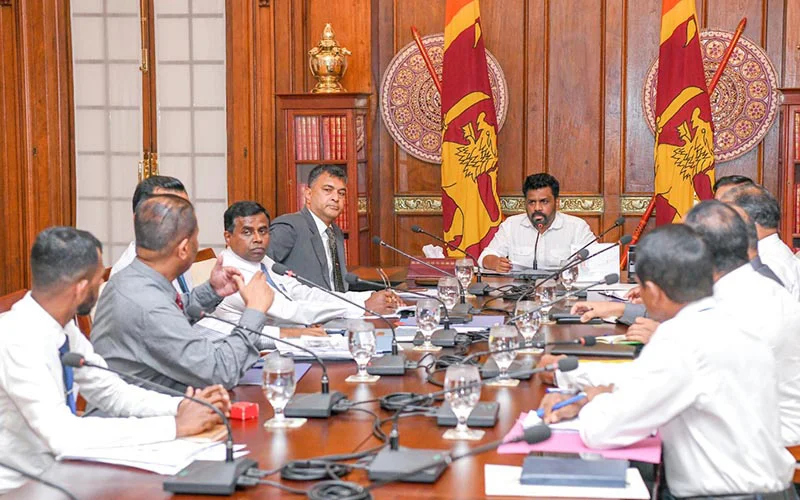
The government is rebuilding the cyclone-devastated lives, livelihoods and infrastructure in the country after the immense destruction caused by Cyclone Ditwah. President Anura Kumara Dissanayake has been providing exceptional leadership by going into the cyclone affected communities in person, to mingle directly with the people there and to offer encouragement and hope to them. A President who can be in the midst of people when they are suffering and in sorrow is a true leader. In a political culture where leaders have often been distant from the everyday hardships of ordinary people, this visible presence would have a reassuring psychological effect.
The international community appears to be comfortable with the government and has been united in giving it immediate support. Whether it be Indian and US helicopters that provided essential airlift capacity or cargo loads of relief material that have come from numerous countries, or funds raised from the people of tiny Maldives, the support has given Sri Lankans the sense of being a part of the world family. The speed and breadth of this response has contrasted sharply with the isolation Sri Lanka experienced during some of the darker moments of its recent past.
There is no better indicator of the international goodwill to Sri Lanka as in the personal donations for emergency relief that have been made by members of the diplomatic corps in Sri Lanka. Such gestures go beyond formal diplomacy and suggest a degree of personal confidence in the direction in which the country is moving. The office of the UN representative in Sri Lanka has now taken the initiative to launch a campaign for longer term support, signalling that emergency assistance can be a bridge to sustained engagement rather than a one-off intervention.
Balanced Statement
In a world that has turned increasingly to looking after narrow national interests rather than broad common interests, Sri Lanka appears to have found a way to obtain the support of all countries. It has received support from countries that are openly rivals to each other. This rare convergence reflects a perception that Sri Lanka is not seeking to play one power against another, and balancing them, but rather to rebuild itself on the basis of stability, inclusiveness and responsible governance.
An excerpt from an interview that President Dissanayake gave to the US based Newsweek magazine is worth reproducing. In just one paragraph he has summed up Sri Lankan foreign policy that can last the test of time. A question Newsweek put to the president was: “Sri Lanka sits at the crossroads of Chinese built infrastructure, Indian regional influence and US economic leverage. To what extent does Sri Lanka truly retain strategic autonomy, and how do you balance these relationships?”
The president replied: “India is Sri Lanka’s closest neighbour, separated by about 24 km of ocean. We have a civilisational connection with India. There is hardly any aspect of life in Sri Lanka that is not connected to India in some way or another. India has been the first responder whenever Sri Lanka has faced difficulty. India is also our largest trading partner, our largest source of tourism and a significant investor in Sri Lanka. China is also a close and strategic partner. We have a long historic relationship—both at the state level and at a political party level. Our trade, investment and infrastructure partnership is very strong. The United States and Sri Lanka also have deep and multifaceted ties. The US is our largest market. We also have shared democratic values and a commitment to a rules-based order. We don’t look at our relations with these important countries as balancing. Each of our relationships is important to us. We work with everyone, but always with a single purpose – a better world for Sri Lankans, in a better world for all.”
Wider Issues
The President’s articulation of foreign relations, especially the underlying theme of working with everyone for the wellbeing of all, resonates strongly in the context of the present crisis. The willingness of all major partners to assist Sri Lanka simultaneously suggests that goodwill generated through effective disaster response can translate into broader political and diplomatic space. Within the country, the government has been successful in calling for and in obtaining the support of civil society which has an ethos of filling in gaps by seeking the inclusion of marginalised groups and communities who may be left out of the mainstream of development.
Civil society organisations have historically played a crucial role in Sri Lanka during times of crisis, often reaching communities that state institutions struggle to access. Following a meeting with CSOs, at which the president requested their support and assured them of their freedom to choose, the CSOs mobilised in all flood affected parts of the country, many of them as part of a CSO Collective for Emergency Response. An important initiative was to undertake the task of ascertaining the needs of the cyclone affected people. Volunteers from a number of civil society groups fanned out throughout the country to collect the necessary information. This effort helped to ground relief efforts in real needs rather than assumptions, reducing duplication and ensuring that assistance reached those most affected.
The priority that the government is currently having to give to post-cyclone rebuilding must not distract it from giving priority attention to dealing with postwar issues. The government has the ability and value-system to resolve other national problems. Resolving issues of post disaster rebuilding in the aftermath of the cyclone have commonalities in relation to the civil war that ended in 2009. The failure of successive governments to address those issues has prompted the international community to continuously question and find fault with Sri Lanka at the UN. This history has weighed heavily on Sri Lanka’s international standing and has limited its ability to fully leverage external support.
Required Urgency
At a time when the international community is demonstrating enormous goodwill to Sri Lanka, the lessons learnt from their own experiences, and the encouraging support they are giving Sri Lanka at present, can and must be utilised. The government under President Dissanayake has committed to a non-racist Sri Lanka in which all citizens will be treated equally. The experience of other countries, such as the UK, India, Switzerland, Canada and South Africa show that problems between ethnic communities also require inter community power sharing in the form of devolution of power. Countries that have succeeded in reconciling diversity with unity have done so by embedding inclusion into governance structures rather than treating it as a temporary concession.
Sri Lanka’s present moment of international goodwill provides a rare opening to learn from these experiences with the encouragement and support of its partners, including civil society which has shown its readiness to join hands with the government in working for the people’s wellbeing. The unresolved problems of land resettlement, compensation for lost lives and homes, finding the truth about missing persons continue to weigh heavily on the minds and psyche of people in the former war zones of the north and east even as they do so for the more recent victims of the cyclone.
Unresolved grievances do not disappear with time. They resurface periodically, often in moments of political transition or social stress, undermining national cohesion. The government needs to ensure sustainable solutions not only to climate related development, but also to ethnic peace and national reconciliation. The government needs to bring together the urgency of disaster recovery with the long-postponed task of political reform as done in the Indonesian province of Aceh in the aftermath of the 2004 tsunami for which it needs bipartisan political support. Doing so could transform a national tragedy into a turning point for long lasting unity and economic take-off.
by Jehan Perera
-

 Business6 days ago
Business6 days agoCabinet approves establishment of two 50 MW wind power stations in Mullikulum, Mannar region
-
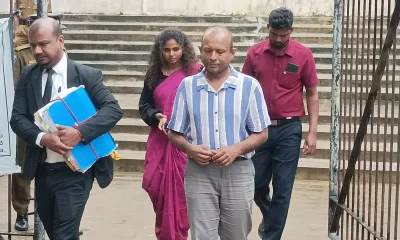
 News6 days ago
News6 days agoGota ordered to give court evidence of life threats
-

 Features6 days ago
Features6 days agoCliff and Hank recreate golden era of ‘The Young Ones’
-

 Features6 days ago
Features6 days agoSri Lanka and Global Climate Emergency: Lessons of Cyclone Ditwah
-

 Latest News7 days ago
Latest News7 days agoSri Lanka squad named for ACC Men’s U19 Asia Cup
-

 Editorial6 days ago
Editorial6 days agoExperience vs. Inexperience
-

 News6 days ago
News6 days agoWFP scales up its emergency response in Sri Lanka
-

 News6 days ago
News6 days agoSpecial programme to clear debris in Biyagama













